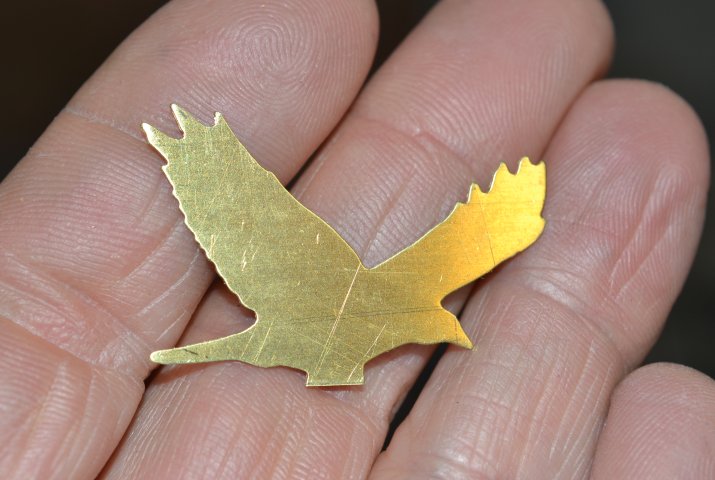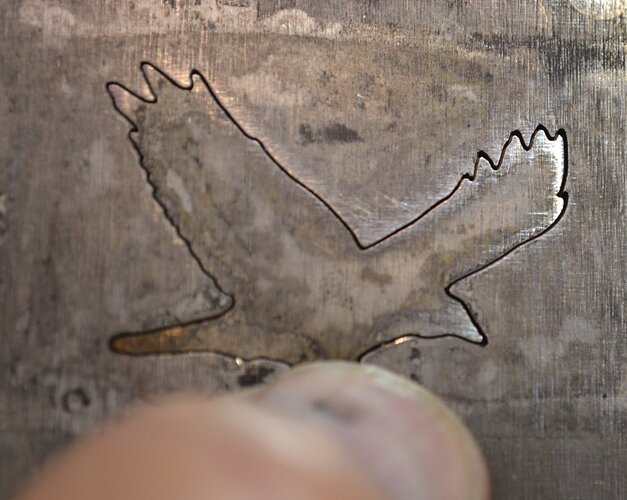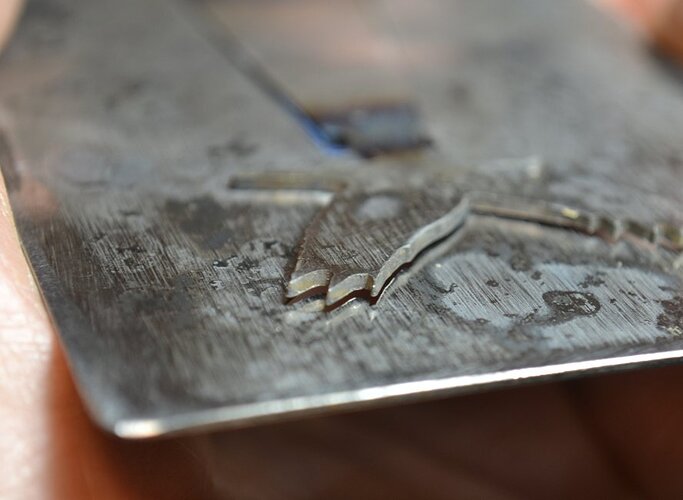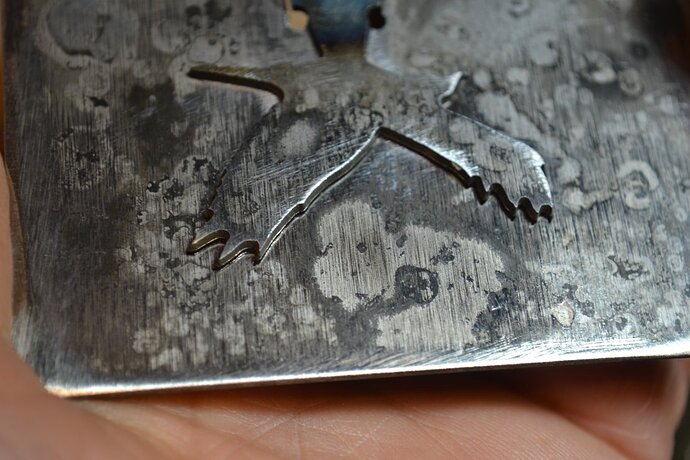Here’s a good example of one with sharp points, what the die looks like close up, and some of the juicy details involved. I hardly ever use blades smaller than 4/0, mostly because I saw a lot of dies and like to saw fast. I used 4/0 Super Glardon blades here, because they corner a little better than the platinum blades I usually use. The steel is 4130 alloy steel at .05" thick, and is heat treated. Sharp points like this would mash out almost immediately with unhardened steel, but hardening a die doesn’t mean you can just get away with anything you want to.
It’s very easy to see how the angle of the saw cut causes the cross section (view) of the thin , pointy parts of the design to taper down to nothing on the reverse side of the die. With little or nothing left to support the cutting surface, even hardened dies will deform with enough use. How much use is too much depends on the thickness and hardness of the die itself, and the metal being cut (obviously). Dies can cut after deformation of the tips/points occurs, but the parts cut will have bent tips and tend to stick in the die a little, but at some point they won’t finish cutting and parts will stick badly.
One thing to do to help is use thicker steel, and/or smaller blades, to lessen the angle, which allows more mass to be retained in the thin areas that are vulnerable. For me, it’s about practicality a lot. Sawing thicker with smaller blades is a lot harder/slower, so I don’t necessarily go all the way, because people don’t necessarily want to pay for that, and many will never use their dies to the point of failure. For this die, the .050" steel has a comfortable maximum capacity of 22 ga (.027") but some people go to 20 ga. (with 3/64" tool steel (.046" thick). I like to have a lot of headroom. The parts fall out more easily, which helps speed up production, and it’s nicer to the dies.
For the angle, I used 14 degrees. The graphed, theoretical angle is about 12 but I use 13 -15 , depending on the complexity of the design. 13 for very complex, and 15 for simple shapes that need to be super tight, say, for bezel strips in 30 ga. fine silver. I can’t explain the exact “science” of why the real-life angles have to be greater than the theoretical angles, but it has to do with a blade cutting a slightly wider gap than it’s measured width, and how heat treating, breaking-in, and use of a die loosen up the tolerance slightly. To end up with dies that are tight, and will reliably cut thin metal cleanly for a long time, angles have to be adjusted from whatever trigonometry or graphing out indicate, usually by 1-3 degrees.



